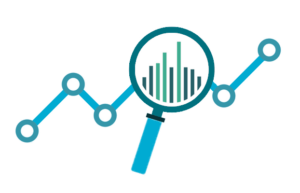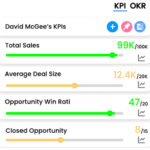Key Performance Indicators Examples

Operating Cash Flow
Operating cash flow (OCF) is a metric used to measure the amount of cash generated or used by a company’s core operations. It is used to measure the company’s ability to generate cash from its day-to-day operations and to identify areas where improvements can be made.
The formula for Operating Cash Flow is:
Operating Cash Flow = Net Income + Depreciation + Amortization + Changes in Working Capital
Net Income is the company’s net profit after taxes and non-operating expenses. Depreciation and amortization are non-cash expenses used to allocate the cost of long-term assets over time. Changes in working capital represents the changes in current assets and liabilities such as accounts receivable, inventory, and accounts payable.
For example, if a company has a net income of $1,000,000, depreciation of $200,000, amortization of $50,000, and a decrease in working capital of $100,000, the Operating Cash Flow would be $1,250,000 ($1,000,000 + $200,000 + $50,000 – $100,000).
It’s important to track the Operating Cash Flow over time, compare it against industry benchmarks and historical data, to identify areas where the company’s operations can be improved. It’s also important to track the Operating Cash Flow by different segments, such as by different teams, products, or locations, in order to identify where the problem is and take action to improve the Operating Cash Flow.
Operating Cash Flow is an important metric for companies, as it allows them to evaluate the effectiveness of their operations and make decisions about investments, finances, and growth.
It’s also important to keep in mind that the Operating Cash Flow should be aligned with the business requirements and the needs of the end-users, a high Operating Cash Flow can indicate a strong financial position, but it can also mean that the company is not investing enough in growth opportunities or not investing in the future.
Measure what matters for your business with KPIs
Track business performance with real time key metrics against targets in one place without the need for multiple dashboards or reports
